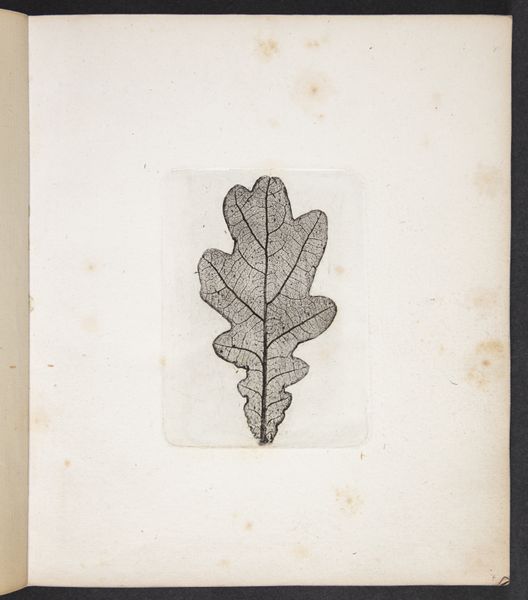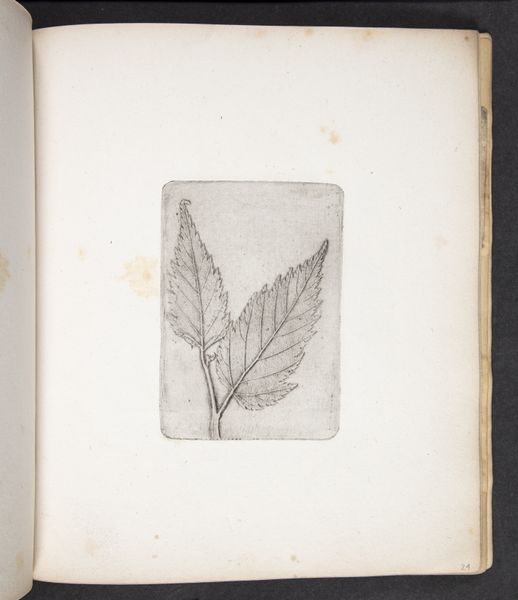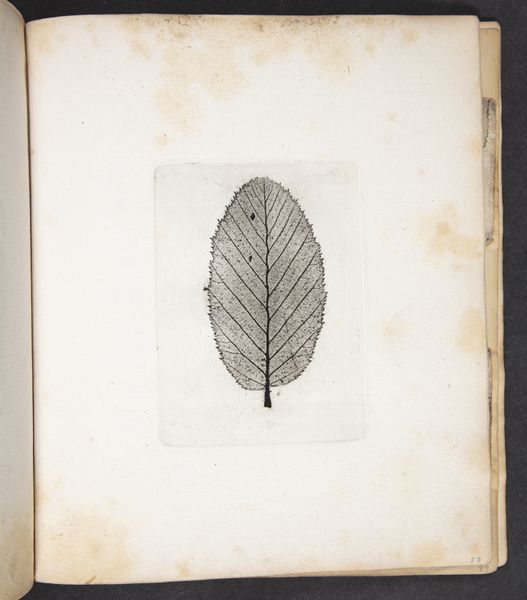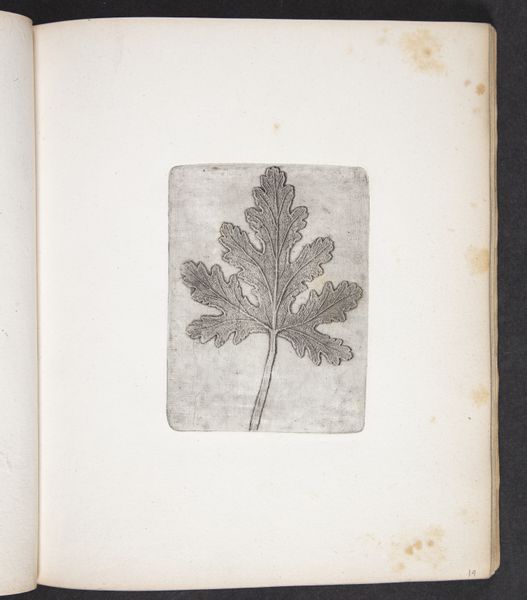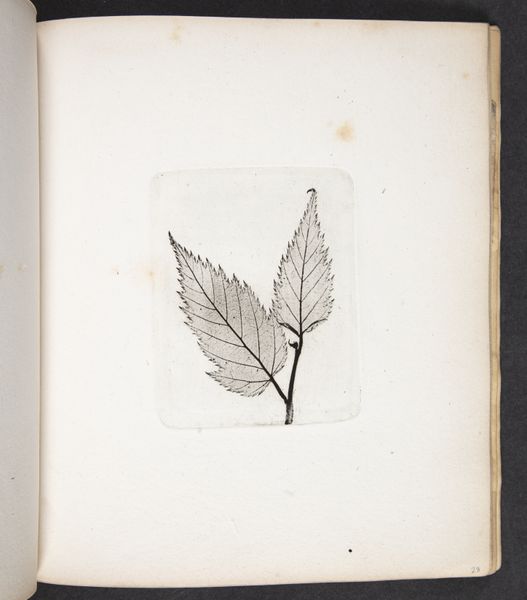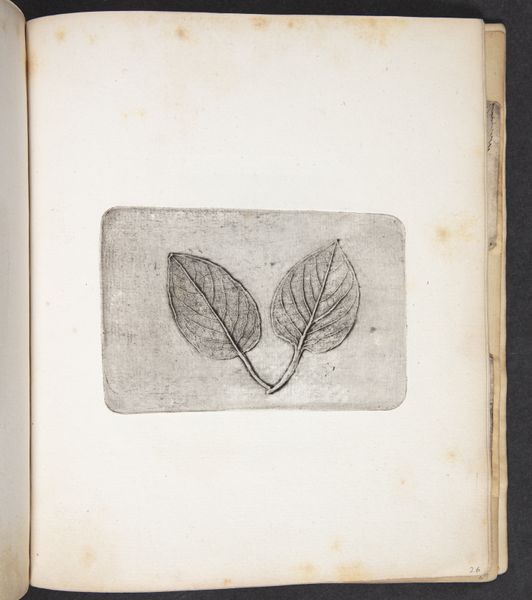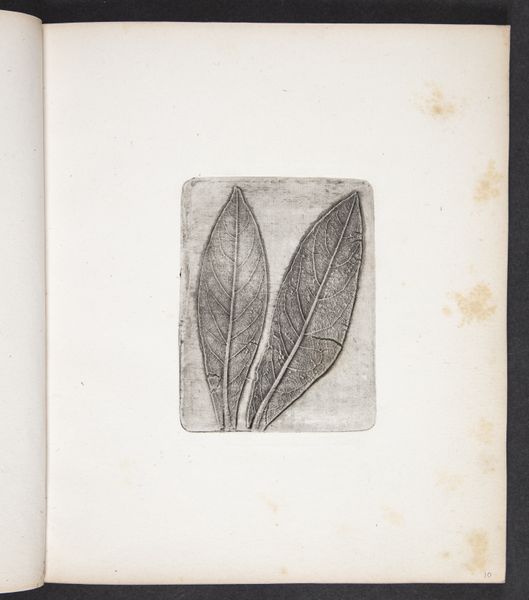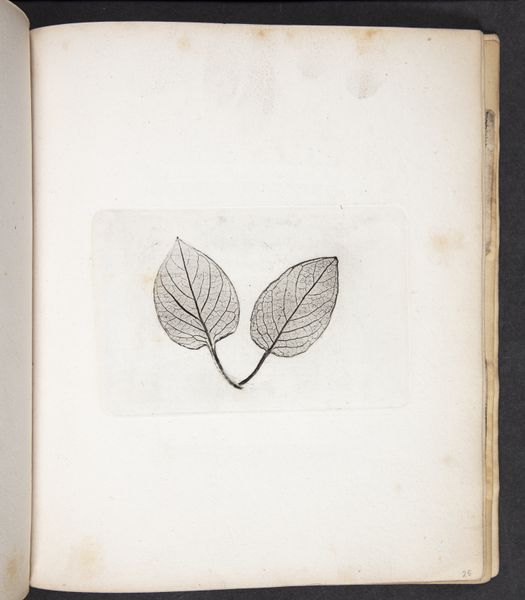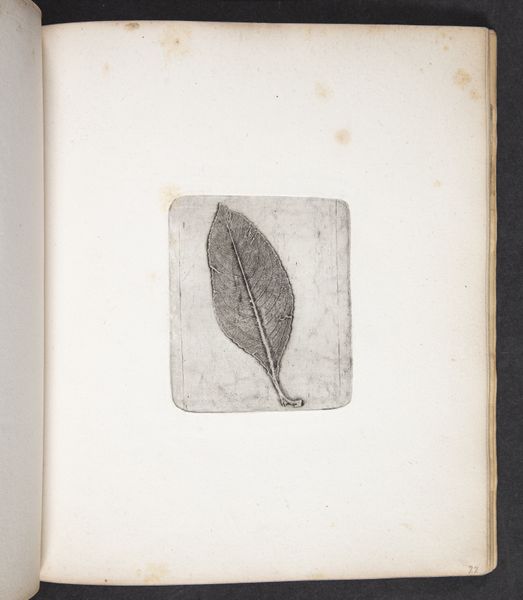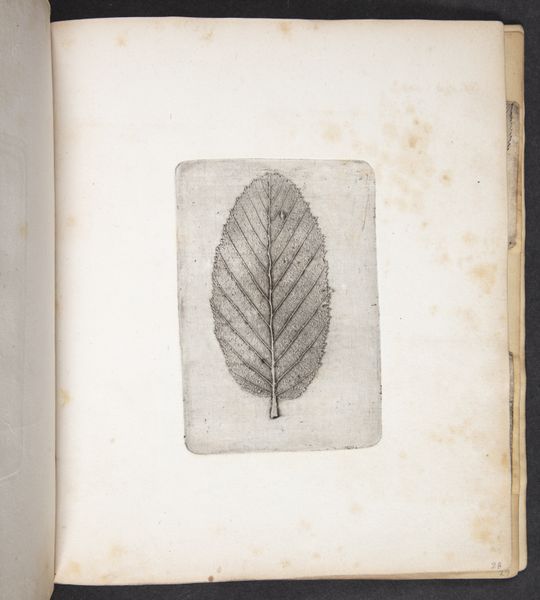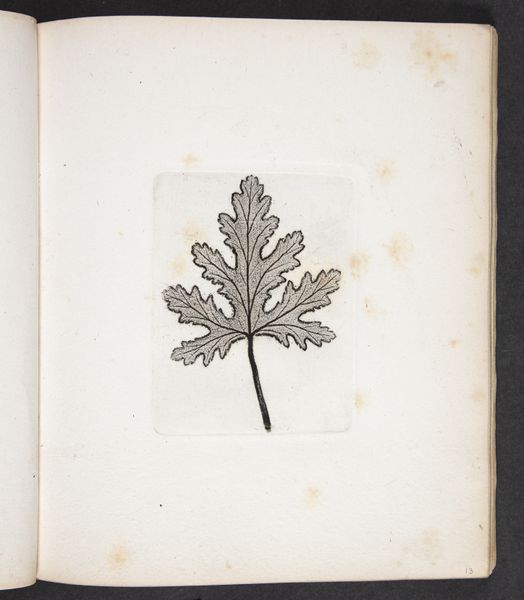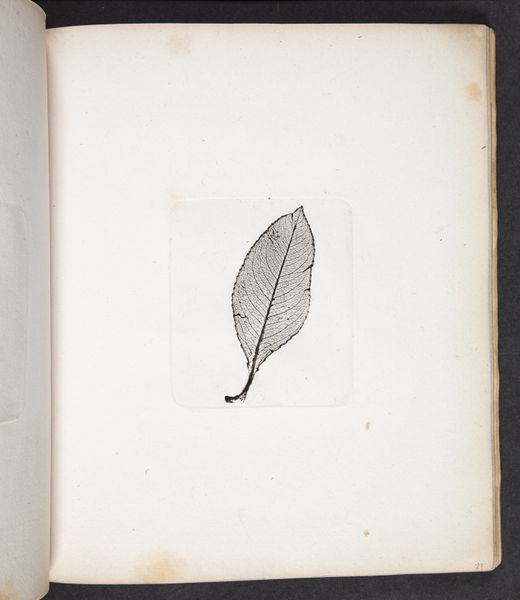
drawing, print, paper
#
drawing
# print
#
paper
Dimensions: 207 mm (height) x 182 mm (width) (Bladmål), 103 mm (height) x 68 mm (width) (Plademål)
Editor: Here we have "Aftryk af egeblad," or "Impression of an Oak Leaf," by Peter Larsen Kyhl, from 1833. It seems to be a print or a drawing on paper, quite delicate. What strikes me is how industrial it appears for such an organic subject; what can you tell me about this work? Curator: Well, considering a materialist lens, this work speaks volumes about the relationship between nature and early industrial processes. It isn't simply a depiction of a leaf; it is an 'impression'. Think about the method, a print: the labour involved in replicating this leaf across multiple surfaces. What kind of societal shift might make such replication desirable or necessary? Editor: So you’re saying it's not just about showing the beauty of nature, but about the act of reproducing it mechanically? Curator: Precisely. It asks us to consider the means of production itself. Kyhl chose the printing method over pure botanical illustration, perhaps to mirror and investigate the increasing mechanization of his era. How does this shift our understanding of the value placed on handmade versus machine-made objects? And further, what purpose do the laboring classes serve in artistic or 'high art' persuits. Editor: That makes me think about how this image would circulate - was it meant for scientific study or wider consumption? Curator: Excellent question. If multiple copies exist, we must also consider the consumer: were these prints destined for scientific manuals, art portfolios, or perhaps even wallpaper designs, therefore changing the role from a "drawing" or "print" into something less esteemed and more easily and readily available? The method of production deeply informs the context of reception and how we should study this object. Editor: I see it now - the material and method offer clues about the larger economic and social currents. It's more than just a pretty leaf. Curator: Exactly! We can learn a great deal from understanding not just what the image depicts, but how it was made, by whom and why at this moment. It truly provides a whole picture and history for that time.
Comments
No comments
Be the first to comment and join the conversation on the ultimate creative platform.
